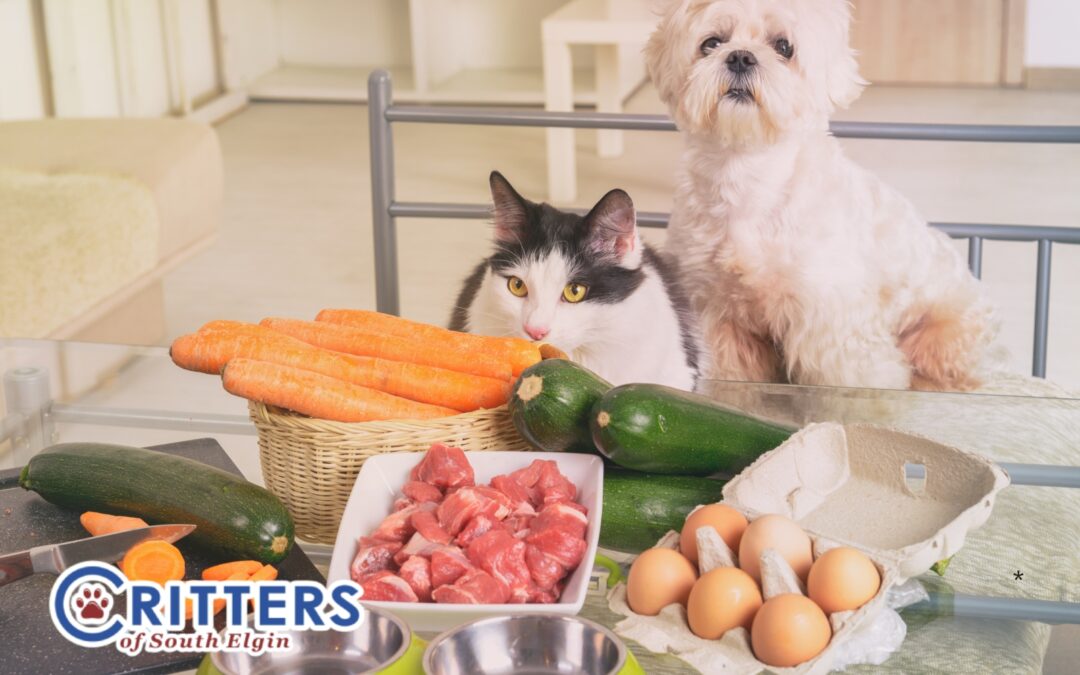Your pantry can hide hazards for cats and dogs. Use this quick guide to spot the biggest kitchen risks, keep curious noses safe, and act fast if something goes wrong.
The Top 10 Kitchen Hazards
1) Chocolate
Why it’s dangerous: Theobromine and caffeine overstimulate the heart and nervous system.
Extra risky: Dark and baking chocolate. Even small amounts can cause trouble.
2) Grapes & Raisins
Why it’s dangerous: They can trigger sudden kidney failure in dogs—even in tiny amounts.
Tip: Keep trail mixes and baked goods out of reach.
3) Onions, Garlic, Chives
Why it’s dangerous: Compounds damage red blood cells and can cause anemia in dogs and cats.
Hidden sources: Stocks, sauces, gravies, spice blends, baby food.
4) Xylitol (a.k.a. “birch sugar”)
Why it’s dangerous (dogs): Causes a rapid, dangerous drop in blood sugar and can lead to liver failure.
Hidden sources: Sugar-free gum/candy, baked goods, some peanut butters, dental products, drink mixes.
5) Alcohol
Why it’s dangerous: Even small amounts can cause vomiting, wobbliness, drops in body temperature, and coma.
Watch-outs: Spilled cocktails, uncooked yeast batter, fermenting fruit.
6) Avocado
Why it’s dangerous: Persin can upset dogs (vomiting/diarrhea) and is toxic to birds and small pets.
Note: Pits also pose a choking/obstruction risk.
7) Macadamia Nuts
Why it’s dangerous (dogs): Can cause weakness, tremors, vomiting, and fever.
Hidden sources: Cookies, nut mixes, crusts.
8) Caffeine (coffee, tea, energy drinks)
Why it’s dangerous: Stimulant effects can lead to restlessness, rapid breathing, abnormal heart rhythms, or seizures.
Also risky: Coffee grounds and tea bags.
9) Raw Dough with Yeast
Why it’s dangerous: Dough expands in the stomach (bloat risk) and fermentation produces alcohol.
Seasonal alert: Bread- and pizza-making days.
10) Fatty or Greasy Foods
Why it matters: Not always “toxic,” but they can trigger pancreatitis—painful and potentially serious.
Examples: Bacon fat, skin drippings, rich gravies, fried leftovers.
What to Do If Your Pet Eats Something Risky
-
Call your veterinarian immediately. Time matters.
-
Or call ASPCA Animal Poison Control: 888-426-4435. Keep the number on your fridge.
-
Don’t wait for symptoms. Some toxins cause delayed damage.
-
Don’t induce vomiting unless a professional tells you to. Certain items can cause more harm on the way back up.
-
Bring details: What was eaten, how much, when, your pet’s weight, and the packaging/ingredient list if possible.
Everyday Prevention That Works
-
Create a “no-share” rule at the table. Family and guests should skip hand-outs.
-
Secure the trash and compost. Use latching lids; take out the trash after parties.
-
Store smart. Keep baking chocolate, gum, nuts, and dough on high shelves or in closed bins.
-
Label the risky stuff. Put a bright dot on products with xylitol.
-
Offer safe swaps. Ask us about dog- and cat-safe treats, puzzle feeders, and chews that satisfy curiosity without the risk.
-
Make a plan. Save your vet’s number and ASPCA Poison Control in your phone.
Quick-Reference List (Pin This)
Chocolate, grapes/raisins, onions/garlic/chives, xylitol, alcohol, avocado, macadamia nuts, caffeine, raw yeast dough, fatty/greasy foods.
A few simple habits can prevent big problems. If you’re unsure about a specific food or ingredient, call your vet or stop by Critters Pet Shop, we’re happy to help you choose safe treats and set up a kitchen-proof routine. 🐾

